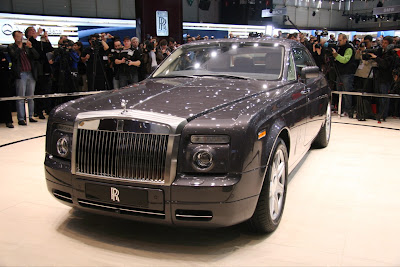
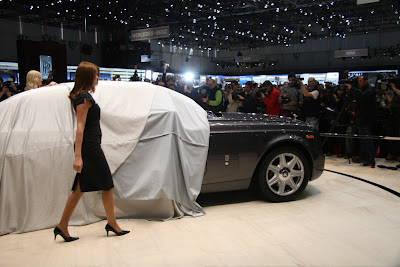
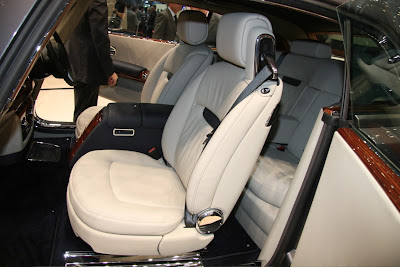
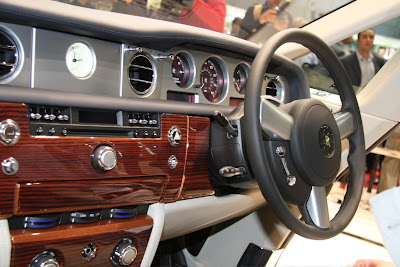 ROLLS-ROYCE PHANTOM COUPÉ
ROLLS-ROYCE PHANTOM COUPÉINTRODUCTION
In 2006,
Rolls-Royce Motor Cars unveiled
101EX, an experimental
car hand-built to explore an exciting
new design direction for a
modern coupé. Wrapped in a sleek, rakish body,
101EX was an engineering-led study, showcasing the technical and architectural innovation inherent in the quintessential
modern Rolls-Royce car. Both handsome and elegant, it encapsulated the essence of contemporary
coupé style.
So positive was the worldwide reaction to
101EX that, in autumn 2007,
Rolls-Royce Motor Cars announced that a series model would go into production in the summer of 2008. This
coupé would complete the
Phantom family, standing alongside the
Phantom,
Phantom Extended Wheelbase and
Phantom Drophead Coupé.
Revealed at the
Salon International de l'Automobile,
Geneva in March 2008, the
Phantom Coupé is the third
new model from
Rolls-Royce Motor Cars since
BMW Group became custodian of the marque in 1998.
The
Coupé is the most driver-orientated model in the
Phantom line. A number of subtle but significant modifications have been made that change its character. It is noticeably more dynamic, whilst still offering incredible levels of comfort a balance not easily achieved.
The
Coupé marries cutting-edge technology with a beautifully proportioned, muscular body that exudes power and style. Utterly contemporary in appearance, it nonetheless incorporates timeless
Rolls-Royce design cues such as the long bonnet, large-diameter wheels, short front and long rear overhangs and the classic dynamic, rising profile.
Pleasing to the touch and to the eye, every material used in the
Rolls-Royce Phantom Coupé has been
carefully selected to combine form with function. The cabin's sumptuous leather, rich wood grains and cool chrome accents create a driver environment unparalleled in
luxury and comfort.
Designed to cover great distances with the minimum of fuss, the
Coupé is a sublime choice for a transcontinental trip, its effortless power provided by the
Phantom's 6.75-litre V12, producing a phenomenal 453 bhp and 720 Nm of torque. Agile, fast, long-legged and virtually silent, the
Phantom Coupé allows both driver and passengers to emerge unruffled, even after an all-day run.
DESIGN"
Rolls-Royce has always been about pace, performance and style," says Ian Cameron, who led the
design team. "For the
Coupé design we have emphasised the dynamism. The driving dynamics of the Phantom have always come as a surprise to customers and the
Coupé builds on this visually as well as dynamically, via hard engineering changes. Its design adds drama to the outstanding engineering and drivability that are fundamentals of
Rolls-Royce cars.
"We could have simply bolted a hard-top roof to the Drophead in order to make the
Phantom Coupé. After all, the convertible is an incredibly well mannered car that performs impeccably. But this would not have been the right thing to do. The
Coupé and the
Drophead are two
distinct cars, with different personalities and specific performance characteristics."
EXTERIORThe sleek lines of the
Coupé suggest tremendous, effortless power. Designed to look like a moving form even at a standstill, the
Coupé has the demeanour of a muscular animal, ready to be unleashed.
The front end, with its slim LED sidelights and larger, round driving lamps, has a gently raked, softer-edged appearance, sweeping back over the long bonnet to the strong line of the triangular A-frame. The front coach-doors are rear-hinged and were newly homologated for use on the
Rolls-Royce Drophead Coupé. Enabling all passengers to enter and exit more gracefully, these doors also offer safety benefits: the rear hinging allows an uninterrupted A-pillar, which adds significantly to the car's overall torsional rigidity. For ease of operation, the doors may be closed at the simple touch of a button, housed discreetly inside the front quarterlight.
In classic
Rolls-Royce style, the
Phantom Coupé has a dynamic, rising profile, its high waistline tapering back to a contemporary take on a boat-tail. Sleek body panels create an uninterrupted visual flow, complemented by accents of stainless steel and aluminium.
The picnic boot, as seen on the
Drophead Coupé, is a wonderfully sociable feature. When lowered, it provides a seating platform for two, with hinges substantial enough to hold a weight of 150 kg / 330 lb. At the same time, it also offers easy access to the luggage compartment, which has a volume of 395 litres / 13.9 cu ft – enough for four sets of golf clubs.
The mirror-like finish of the paintwork perfectly sets off the stunning lines of the
Coupé. Each body receives five individual coats of paint and lacquer, with hand-finishing between each layer. It is then polished for five hours to create a lustre that is unsurpassed in the automotive world. A new palette of nine standard paint colours has been selected for the
Coupé, including Darkest Tungsten, Anthracite and New Sable. However, through the Bespoke programme, customers can choose from more than 44,000 different hues. Like the
Drophead Coupé, the
new model is available with a brushed steel bonnet and A-pillar surround. These parts are machine-brushed to create a uniform grain and then hand-polished to a unique and flawless finish.
Extraordinary attention to detail is the hallmark of a true
Rolls-Royce and this is exemplified in the finer details of the
Phantom Coupé. Visible tailpipes hint at its role as a
driver's car, as do the 21-inch wheels, which are available in three styles, including two forged alloy options. Indispensable to those who spend a lot of time in town is an optional camera, nestled below the front numberplate. When pulling out of a side road or parking, it transmits a split-screen view of the road ahead. At the rear, another camera is fitted beneath the chrome boot-lid handle, to aid reversing manoeuvres.
INTERIORAn exquisite
interior, hand-built using the finest materials, supremely comfortable and equipped with a
studio-quality sound system, makes the
Phantom Coupé the perfect car for all-day driving. Clean and contemporary, the cabin uses traditional materials in a modern way to create a tactile and visual feast: driver and passengers touch only leather, wood or chrome.
All the controls are intuitively and conveniently positioned, the simplicity of the facia belying the technology beneath. An analogue clock set in a bookmatched veneered panel hides the media screen, only to be revealed when called upon. The multi-zone climate control has chromed eyeball vents and traditional 'organ stop' controls, while additional features are accessed using beautifully crafted 'violin keys' – contemporary uses of long-established, and well loved,
Rolls-Royce design features.
The
Lexicon LOGIC7TM sound system can be controlled by just one dial. Unique in its use in the automotive industry, the Lexicon system has 15 metal-matrix speakers to deliver an unparalleled clarity of sound, regardless of where a passenger may be seated. A nine-channel amplifier powers these speakers – two sub-woofers fitted beneath the seats and 13 100 mm mid-range and 44 mm tweeter arrays carefully placed around the car – to an impressive 420 watts of sound. The
Coupé is available with iPod connectivity as an alternative to the standard six-CD changer.
The commanding driving position affords the most inspirational view in motoring: straight down the long sweep of bonnet to the Spirit of Ecstasy. Closer fitting than those of the
Rolls-Royce Phantom, the slim-line front seats offer outstanding comfort, ensuring that both driver and passenger remain fresh and relaxed after a day's
drive.
The rear of the
Coupé houses an inviting lounge seat, a curved sofa that
interior designer Alan Sheppard describes as, "intimate for two yet superbly comfortable on long journeys". Boulevard lighting creates a gentle luminescence, an effect that can be heightened by the optional, full-length starlight headlining, which incorporates hundreds of tiny fibre optics to give the impression of a star-filled night sky. Adjustable to provide a quiet glow or ample light to read by, this beautiful lighting is complemented by discreet directional reading lights in the C-pillars.
As with every
Rolls-Royce car, the interior of the
Coupé can be personalised via the
Bespoke programme, allowing for any number of features, each tailored to the tastes of the individual.
ENGINEERING
At the core of the
Coupé is a sophisticated, all-aluminium spaceframe, first seen in the
Phantom. It provides an exceptional base for the car, offering great strength, a very high degree of torsional rigidity and low weight, all of which benefit dynamics. Manufactured to within a tolerance of just 0.1 mm / 0.004 in, each spaceframe is constructed by hand and then checked by computer to ensure total accuracy. The body's structure, comprised of box sections of aluminium, is painstakingly hand-welded by a team of experts. Every morning, each member of the team performs a 300 mm test weld to ascertain atmospheric effects on the metal with which they are working so that these can be taken into account. In all, more than 130 metres of weld are used to create the
Coupé's spaceframe.
The
Rolls-Royce Phantom Coupé's lightweight and rigid structure, the most torsionally stiff in the
Phantom line, provides the foundation for its excellent dynamic abilities, but it also offers safety benefits. The box sections are exceptionally strong and offer greater dispersion of energy in the event of a collision. Frontal impacts are absorbed by crumple zones that direct the force into Y-shaped chassis members and the main understructure, the strongest part of the chassis. Side impact intrusion is minimised by the double-skinned floor construction, side sills and integral side impact bars in each door.
The inherent safety of the spaceframe is enhanced by other safety systems controlled by ISIS (Intelligent Safety and Information System). This takes readings from sensors located throughout the car and, in the event of an impact, makes up to 4000 calculations a second to establish its severity, deploying safety systems as necessary. These include intelligent braking and restraint systems, such as
Dynamic Stability Control and
Dynamic Traction Control, seatbelt pre-tensioners and any of six airbags.
With the exception of the picnic boot, steel bonnet and A-pillar surround, all the
Coupé's panels are created from aluminium, a material that delivers a substantial weight saving over steel. The large, single-piece front wings are made by a process called super plastic forming. The alloy is heated and then formed, without stress of the material, to the required shape and size in a process seen for the first time in the automotive industry.
At the heart of the
Coupé is the same
6.75-litre V12 engine as used by the
Phantom. Featuring advanced direct fuel injection with variable valve lift and timing, it offers the perfect combination of power and outstanding combustion efficiency. Designed to develop massive low-down torque, it delivers 75 per cent of its maximum power at just 1000 rpm, giving the smooth, unstressed performance associated with
Rolls-Royce cars. The powertrain develops 453 bhp / 338 kW of power at 5350 rpm and 720 Nm / 531 lb ft of torque at 3500 rpm – ample for even the most enthusiastic of drivers. At 100 mph (where permissible), the
Coupé's power reserve dial shows that 90 per cent of the engine's power remains untapped.
DRIVING
The objective of the
Phantom Coupé engineering team was to create a driving experience that was entirely true to
Rolls-Royce, yet noticeably more dynamic. The resulting balance of agility and refinement, however, surprised even those closest to the project.
Smoothness of ride is still exceptional, yet has been made a little firmer by the introduction of stiffer rear dampers and modified spring rates. Body roll is reduced by fitting a thicker rear anti-roll bar and the steering has been tuned to offer more feel – a sensation enhanced by a slightly thicker, hand-stitched leather steering wheel.
The suspension and chassis tune mean that the power is put down on the road incredibly effectively. Outstanding grip means that the dynamic stability control (DSC) is less likely to be activated under enthusiastic cornering, making it feel more balanced when pushing on.
A sport button on the steering wheel activates a new gearbox programme. Each gear is held for longer, increasing the rate of acceleration. Kick-down is also faster and accelerator pedal response has been enhanced.
Together these individual changes to the car's set-up give a substantially more dynamic feel than the
Phantom and
Phantom Drophead Coupé. In combination with the effortless power that is always on tap, the new state of tune makes driving the
Phantom Coupé not only pleasurable but also exhilarating. With a limited top speed of 155 mph / 250 km/h, the
Coupé accelerates from 0-60 mph in 5.6 seconds.
The
Coupé's wheelbase is 250 mm shorter than that of the
Rolls-Royce Phantom, giving greater agility. Its 49:51 weight ratio ensures that it remains beautifully balanced through corners, while the slight rear weight bias maximises straight-line acceleration and traction. Self-levelling air suspension continuously adjusts to driving conditions, enabling drivers to place the car accurately through bends. The steering has modified Servotronic assistance to provide increased road feel.
The extreme rigidity of the
Coupé's chassis gives magnificent control and precision. The front double-wishbone suspension features a hydraulic mount to minimise vibrations through the steering wheel, while multi-link rear suspension gives increased ride comfort, with anti-lift and
anti-dive technology for stability under heavy acceleration and braking. This combines with the stronger rear anti-roll bar and stiffer spring and damper settings to increase both accuracy and agility.
As standard, the
Rolls-Royce Phantom Coupé has 21-inch Goodyear tyres with run-flat capability, sitting on seven-spoke aluminium or two different styles of forged aluminium rims. In the unfortunate event of a flat tyre, the
Coupé can run for at least 100 miles / 160 km at speeds of up to 50 mph / 80 km/h before the tyre has to be replaced. As well as being convenient, this run-flat technology negates the need for spare wheels and a jack, freeing up space in the luggage compartment. The Coupé's 100-litre fuel tank allows for the longer drives that its character encourages, giving a range of around 400 miles / 630 km.
Braking is provided by massive 374 mm / 14.7 in ventilated disc brakes at the front and 370 mm / 14.6 in at the rear. Twin piston alloy calipers at the front and single piston calipers at the rear ensure that the
Coupé is brought to a stop quickly and without drama. Naturally, the braking system incorporates the latest in anti-lock systems and Emergency Brake Assist is activated under heavy braking, applying full force in an emergency stop.
CRAFTSMANSHIPRolls-Royce Motor Cars has never accepted what is nearly right, only what is best.
Henry Royce's maxim, "Strive for perfection in everything you do" is exemplified in the extraordinary craftsmanship of the car's interior. Highly skilled men and women employ both traditional techniques and cutting-edge technology to create an interior that is unsurpassed in terms of quality and attention to detail. They work with only the finest natural materials, including cashmere blends, wood veneers and leather, all of which are specially selected by a team of experts before being painstakingly prepared so that their inherent beauty is captured.
Each wood veneer is chosen for its complexity of grain and colour and is selected from sources worldwide. Woods available for the
Coupé include Zebrano, Elm Cluster, Mahogany Flare, Rosewood and Walnut Burr. Each part is crafted by hand in the wood shop at Goodwood. Veneers are laid onto a substrate part of up to 24 layers of wood and aluminium, carefully constructed to provide strength and safety in the event of an impact. They are then lacquered and polished to a mirror finish, perfectly showcasing the beauty and intricacy of the wood's grain.
The
Coupé's interior uses larger pieces of leather than the
Phantom's, mainly because of the nature of the seats, and this makes the selection of appropriate hides even more challenging. Following a unique barrel-dyeing process, which ensures a rich, uniform pigmentation throughout the leather, each hide is checked by hand and eye, and any naturally occurring blemishes and imperfections are marked in preparation for cutting. Where possible, the hide is used in such a way that these marks are hidden rather than discarded, minimising waste and creating a perfect finished product.
COLOUR AND TRIMIn addition to the options above, customers can specify unique features through the company's Bespoke programme. For example, they may choose from 44,000
exterior colours, specify a one-off leather colour or even select an unusual wood to complement the interior. Our Bespoke interior designers can also use embroidery and marquetry to personalise the inside of the car. All manner of other technical, structural and aesthetic detailing is possible, to meet the precise requirements of customers.
Exterior coloursDiamond Black
English White
New Sable
Madeira Red
Darkest Tungsten
Midnight Blue
Woodland Green
Jubilee Silver
Anthracite
Interior leatherBlack
Smoke Grey
Seashell
Navy Blue
Moccasin
Cacao
Consort Red
Signal Red
Roseleaf
Interior veneersMahogany Flare
Rosewood
Walnut Burr
Piano Black
Zebrano
Elm Cluster
TECHNICAL SPECIFICATION - WORLD VERSIONDimensionsNumber of doors / seats: 2 / 4
Vehicle length: 5609 mm / 220.8 in
Vehicle width: 1987 mm / 78.2 in
Vehicle height (unladen): 1592 mm / 62.7 in
Wheelbase: 3320 mm / 130.7 in
Turning circle: 13.1 m / 43.0 ft
Track, front: 1687 mm / 66.4 in
Track, rear: 1671 mm / 65.8 in
Width at shoulder height, front: 1491 mm / 58.7 in
Width at shoulder height, rear: 1298 mm / 51.1 in
Elbow room, front: 1562 mm / 61.5 in
Elbow room, rear: 1266 mm / 49.8 in
Head room, front: 981 mm / 38.6 in
Head room, rear: 942 mm / 37.1 in
Boot volume (DIN): 395 ltr / 13.9 cu ft
Fuel tank capacity: 100 ltr / 22 Imp gal
WeightUnladen weight (DIN): 2590 kg / 5710 lb
Axle load ratio, rear (unladen): 51.5 %
Gross vehicle weight: 3050 kg / 6724 lb
Payload: 460 kg / 1014 lb
Axle load limit, front: 1425 kg / 3142 lb
Axle load limit, rear: 1800 kg / 3968 lb
Engine & transmissionEngine / cylinders / valves: V / 12 / 48
Fuel management: Direct injection
Displacement: 6749 cc / 411.8 cu in
Stroke: 84.6 mm / 3.33 in
Bore: 92.0 mm / 3.62 in
Power output @ engine speed: 453 bhp / 460 PS (DIN) / 338 kW @ 5350 rpm
TransmissionMax torque @ engine speed: 720 Nm / 531 lb ft @ 3500 rpm
Compression ratio / fuel type: 11:1 / premium unleaded1
Transmission type: ZF 6HP32
Tranratsmission ios1st / 2nd / 3rd /: 4.171 / 2.340 / 1.521 /
4th / 5th / 6th: 1.143 / 0.867 / 0.691
Reverse: 3.403
Final-drive ratio: 3.460
Steering & brakesSteering type: Rack & pinion, speed-sensitive variable-rate power assistance
Brakes, front / diameter: Ventilated disc / 374 mm / 14.7 in
Brakes, rear / diameter: Ventilated disc / 370 mm / 14.6 in
AerodynamicsDrag Cd: 0.36
Drag Cd x A: 0.985 m2 / 10.6 ft2
Performance2Top speed: 155 mph / 250 km/h (governed)
Acceleration 0-60 mph: 5.6 sec
Acceleration 0-100 km/h: 5.8 sec
Fuel consumption2Urban: 23.2 ltr/100 km / 12.2 mpg (Imp gal)
Extra urban: 11.3 ltr/100 km / 25.0 mpg (Imp gal)
Combined: 15.7 ltr/100 km / 18.0 mpg (Imp gal)
CO2 emissions: 377 g/km
Wheels (21 in alloy)Tyre, front: Goodyear EMT 255/50 R21 106W
Wheel size, front: 8 in x 21 in
Tyre, rear: Goodyear EMT 285/45 R21 109W
Wheel size, rear: 9.5 in x 21 in
Filling capacitiesRadiator incl. heater / engine oil: 14 ltr / 8.5 ltr
Transmission fluid / final-drive fluid: Lifetime filling
Electric systemBattery capacity / installed position: 90 + 70 Ah / boot
Alternator / output rating: 2 x 180 A / 2520 W
1. The engine is designed for octane grade 98 fuel; however, it may be run on fuel with a minimum octane grade of 91.
2. Subject to final verification.
TECHNICAL SPECIFICATION - US VERSION
DimensionsNumber of doors / seats: 2 / 4
Vehicle length: 5609 mm / 220.8 in
Vehicle width: 1987 mm / 78.2 in
Vehicle height (unladen): 1592 mm / 62.7 in
Wheelbase: 3320 mm / 130.7 in
Turning circle: 13.1 m / 43.0 ft
Track, front: 1687 mm / 66.4 in
Track, rear: 1671 mm / 65.8 in
Width at shoulder height, front: 1491 mm / 58.7 in
Width at shoulder height, rear: 1298 mm / 51.1 in
Elbow room, front: 1562 mm / 61.5 in
Elbow room, rear: 1266 mm / 49.8 in
Head room, front: 981 mm / 38.6 in
Head room, rear: 942 mm / 37.1 in
Trunk volume (SAE): 10.5 cu ft
Fuel tank capacity: 100 ltr / 26.4 US gal
Weight2Curb weight: 2630 kg / 5798 lb
Axle load ratio, rear (unladen): 51.7 %
Gross vehicle weight: 3050 kg / 6724 lb
Payload: 420 kg / 926 lb
Axle load limit, front: 1425 kg / 3142 lb
Axle load limit, rear: 1800 kg / 3968 lb
Engine & transmissionEngine / cylinders / valves: V / 12 / 48
Fuel management: Direct injection
Displacement: 6749 cc / 411.8 cu in
Stroke: 84.6 mm / 3.33 in
Bore: 92.0 mm / 3.62 in
Power output @ engine speed: 453 hp (SAE) @ 5350 rpm
TransmissionMax torque @ engine speed: 720 Nm / 531 lb ft @ 3500 rpm
Compression ratio / fuel type: 11:1 / premium unleaded1
Transmission type: ZF 6HP32
Transmission ratios1st / 2nd / 3rd /: 4.171 / 2.340 / 1.521 /
4th / 5th / 6th: 1.143 / 0.867 / 0.691
Reverse: 3.403
Final-drive ratio: 3.460
Steering & brakesSteering type: Rack & pinion, speed-sensitive variable-rate power assistance
Brakes, front / diameter: Ventilated disc / 374 mm / 14.7 in
Brakes, rear / diameter: Ventilated disc / 370 mm / 14.6 in
AerodynamicsDrag Cd: 0.36
Drag Cd x A: 0.985 m2 / 10.6 ft2
Performance2Top speed: 155 mph (governed)
Acceleration 0-60 mph: 5.6 sec
Fuel consumptionCity: To be confirmed
Highway: To be confirmed
Combined: To be confirmed
CO2 emissions: To be confirmed
Wheels (21 in alloy)3/4Tire, front: Goodyear EMT 255/50 R21 106W
Wheel size, front: 8 in x 21 in
Tire, rear: Goodyear EMT 285/45 R21 109W
Wheel size, rear: 9.5 in x 21 in
Filling capacitiesRadiator incl. heater / engine oil: 14.8 quarts / 9 quarts
Transmission fluid / final-drive fluid: Lifetime filling
Electric systemBattery capacity / installed position: 90 + 70 Ah / trunk
Alternator / output rating: 2 x 180 A / 2520 W
1. The engine is designed for octane grade 98 fuel; however, it may be run on fuel with a minimum octane grade of 91.
2. Manufacturer's test results. Actual results may vary depending on specifications of the vehicle, road and environmental conditions, testing procedures and driving styles. These results should be used for comparison only and verification should not be attempted on public roads. Subject to final verification.
3. With run-flat tires, you can continue for a distance of at least 100 miles at speeds up to 50 mph; however, when notified, you should check your tire condition at the next available opportunity.
4. The Goodyear Extended Mobility Tire system (EMT) has run-flat capabilities.
Photos: autoblog.com
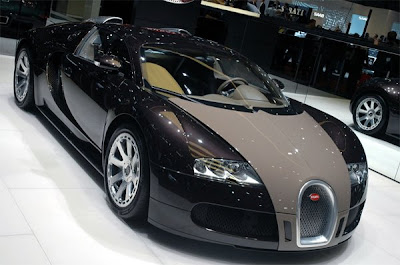 This exceptional model – Bugatti Veyron Fbg par Hermes – is priced at 1.55 million euros (not including tax).
This exceptional model – Bugatti Veyron Fbg par Hermes – is priced at 1.55 million euros (not including tax).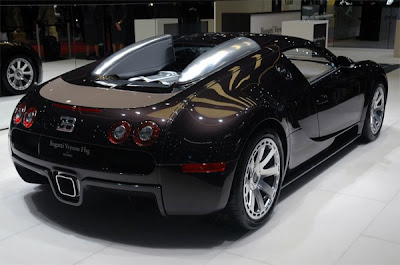


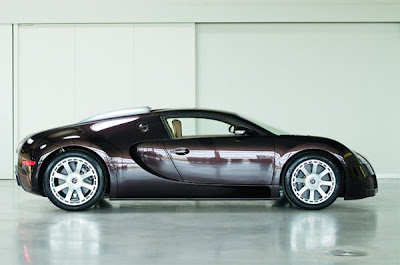
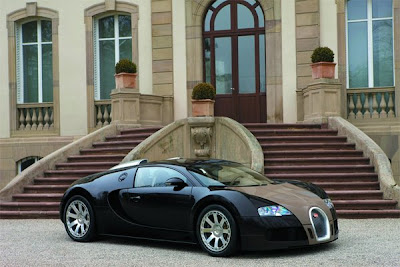
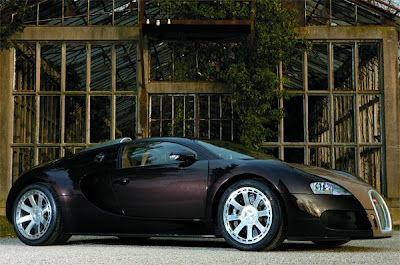 PRESS RELEASE
PRESS RELEASE



